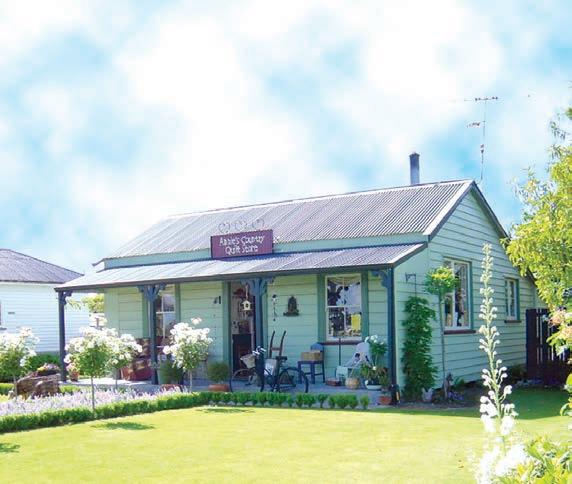
5 minute read
What is the function of
New Justice of the Peace
By Jaime Pitt-MacKay Jaime.p@theguardian.co.nz Ashburton’s Justice of the Peace ranks have been bolstered after a new JP was sworn in at the Ashburton District Court on Monday morning.
Advertisement
Alison Driscoll was sworn in in front of Judge Joanna Maze in the Ashburton District Court. Driscoll was born into a farm ing family and grew up in the Ashburton District. After attending Ashburton Borough School and Ashburton College, she worked at the Ashburton Guardian as a journalist. S he married John Driscoll a little over 40 years ago and together they enjoyed working and managing family farms until the late 1990s when they moved to a lifestyle block nearer to Ashburton.
The next nine years were spent owning and managing the Bernina Sewing Centre in Ashburton before it was sold.
At the beginning of 2009 Dri scoll began her current role as elector ate agent to former Rangitata MP Jo Goodhew and in 2017 to R angitata MP Andrew Falloon.
In the course of her work Driscoll meets and assists a wide r ange of people in the Ashburton District. Alison Driscoll (right) was sworn in as a Justice of the Peace by Judge Joanna Maze (centre) on Monday. PHOTO JAIME PITT-MACKAY 240220-JPM-0003
S he said she sees her role as a JP as an extension of the community service she has enjoyed as a member of the R otary Club of Ashburton and as chair for two Cancer Society Relays for Life.
She now lives with John in Ashburton. They have four adult chil dren, three of whom live in the Ashbur ton District, and eight grandchildren.
She and John both enjoy time spent with their family, gardening, reading, family history and tr avel.
The Justices of the Peace Act 1361 in England empowered JPs to apprehend, arrest and punish offenders and rioters.
Judge Maze said it was a pleasure to be able to swear in a new JP, and that it was a role that often slides under the radar in terms of receiving recogni tion.
Community winners in foundation grants
By Sue Newma sue.n@theguardian.co.nz The generosity of two brothers who left their estates to the Mid Canterbury community is seeing more than $850,000 given away each y ear in grants to dozens of organisations. The M ackenzie Foundation’s 2019 grants programme totalled $841,173, given to 42 organisations, and similar amounts have been giv en each year since the foundation was established in 1978.
Ealing farmers Alan and Don Mackenzie owned nearly 2500 acres of land, two stud herds of cattle and two stud flocks of sheep. Both were unmarried and decided to leave their es tates to a foundation that would benefit their community w ell into the future.
The brothers were both diagnosed with cancer in the mid1970s and almost their entire wealth was transferred to the foundation shortly before they died.
The trustees assumed owner ship of the farming assets and continued far ming until 2002 when they sold the farms and have since successfully managed a diverse investment portfolio.
They specified that gr ants should be made over three categories – cancer research, treatment, provision of equipment, and the education and tr aining of trained people; agriculture – research, development, education for, and training and expansion of the science and practice of agriculture and for general charitable purposes, taking into account the needs of young people with disabilities or who have less chance in life than many of their peers . In its 2019 grants round, $327,500 was given to agriculture across four leadership tr usts (including Nuffield and Kellogg) and to one innovation project.
The University of Otago received $232,000 for cancer research and for a summer intern pr ogramme and $207,612 was granted to a range of organisa
a tions that benefited children. The lar gest amount in this category went to the Ashburton Learning Centre’s Boost reading programme in schools, $58,622 with Safer Mid Canterbury re ceiving $25,000 towards the Liv es Worth Living suicide prevention programme.
Among the $274,061 of general grants was $83,000 to the Ashburton Housing and Support T rust and $50,000 to the Maia Health Foundation.
Trust secretary Trevor Croy has been with the foundation from day one and has watched its investment pool grow in val ue from an initial trust capital of $826,247 to an accumulated fund of 17.380 million dollars.
In brief
Ruapehu rumbling A series of small volcanic earthquakes rumbled beneath Mt Ruapehu at the weekend. GNS Science says the larger events at the start of the quakes were approximately magnitude 1.5 and with later, smaller events were too small to be located by its earthquake detection-location system. “The seismic recordings indicate a source beneath the summit area, which is normal for volcanic earthquakes and volcanic tremor at Ruapehu,” a GNS spokesman said. “The sequence now appears to be over.” - NZME
Maggots in wounds The Health and Disability Commission has criticised a South Auckland resthome and one its staff members after an 86-yearold resident had 15 maggots hatch in his wounds. Heritage Lifecare Limited and one staffer have been found in breach of the Code of Health and Disability Services Consumers’ Rights for failing to provide adequate care to the dying man, a report released yesterday says. In the report the man has not been named but previous stories written by the Herald identify him as Evan, a former resident of Palms Lifecare in Pukekohe who died on March 9 last year. Rose Wall, deputy Health and Disability Commissioner, said the man’s endof-life care was “unacceptable” - and that he suffered unnecessarily in his last months. - NZME
Dung beetle release Thousands of dung beetles are set to be released into the Mahia Peninsula as part of a Whangawehi Catchment Management Group initiative. The dung beetles will be released at Te Mahia School with the aid of local school children today at 9.30am. The farmer and marae-led collective’s project manager Nicolas CavialeDelzescaux said the children involved in the release are part of the Hill Country Futures project’s citizen science initiative. CavialeDelzescaux said: “Dung beetles are game changers. They will build and retain soils, integrate nutrients into the soil profile and cut off run-off. Releasing them complements all the hard work done by groups to plant riparian margins to reduce run-off reaching the streams.” - NZME


Bernette Sew and Go












